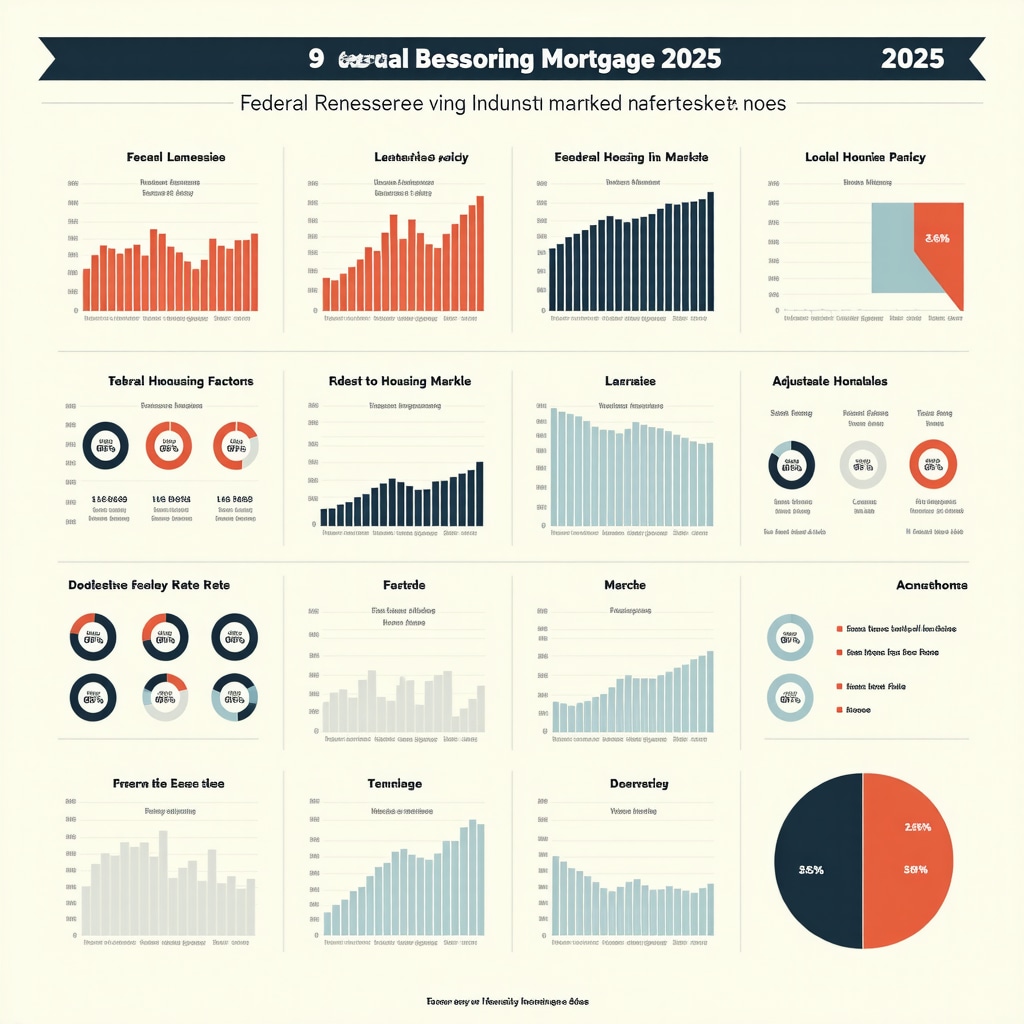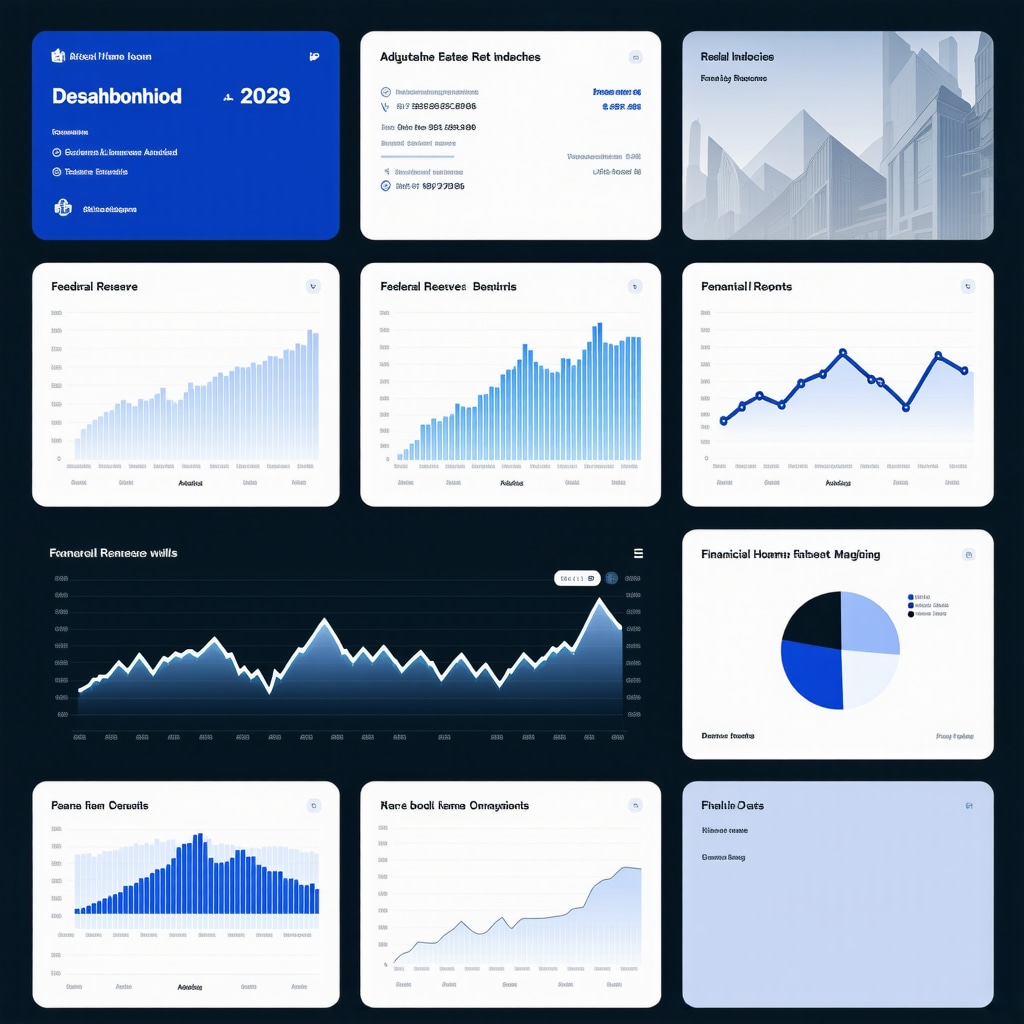Unlocking the Rhythm: How Adjustable Mortgage Rates Shift in Tennessee 2025
Adjustable mortgage rates can feel like an unpredictable tide to Tennessee homebuyers in 2025. Unlike fixed-rate mortgages, these rates fluctuate, reflecting economic currents and lender policies. Understanding how often adjustable mortgage rates change is crucial for anyone navigating Tennessee’s real estate market this year, especially with the state’s unique economic landscape and the lingering effects of recent inflationary pressures.
The Pulse Behind Adjustable Rates: What Drives Changes and When?
Adjustable-rate mortgages (ARMs) typically begin with a fixed interest period—often 3, 5, 7, or 10 years—after which the rate adjusts periodically. In Tennessee, the most common adjustment interval is annually after the initial fixed period. This means that once the fixed term concludes, your mortgage rate can change once every 12 months, tied to an index like the one-year Constant Maturity Treasury (CMT) rate plus a lender-defined margin.
For instance, a 5/1 ARM has a stable rate for five years, then adjusts once each year thereafter. This balance offers initial stability with future rate variability, which can be advantageous if market rates decline but risky if rates climb.
Why Tennessee’s Market Influences Adjustment Frequency and Amounts
Tennessee’s mortgage environment is influenced by both national economic indicators and local market dynamics such as housing demand in cities like Nashville and Memphis. The frequency of rate changes is federally regulated, but the magnitude of those changes can vary based on lender caps and state-specific loan products.
Moreover, Tennessee borrowers should consider margin and index selection by lenders, which can differ widely. Lenders in Tennessee often use the Constant Maturity Treasury (CMT) rates as a benchmark, which fluctuate daily, but rate adjustments on your loan occur only at the scheduled intervals.
How Do Rate Caps and Adjustment Periods Protect Tennessee Borrowers?
Federal regulations limit how much your adjustable mortgage rate can increase at each adjustment and over the lifetime of the loan. In Tennessee, these caps typically prevent sudden, drastic payment hikes, offering a safeguard for homeowners. For example, an ARM might have a 2% annual cap and a 5% lifetime cap, meaning your rate can’t jump more than 2% at each adjustment or exceed 5% above the initial rate overall.
Understanding these caps can help Tennessee borrowers anticipate possible payment changes and budget accordingly, mitigating the risk of payment shocks.
Expert Tips: Navigating Adjustable Rates in Tennessee’s 2025 Market
Given the annual adjustment cycle post-fixed period, savvy Tennessee homebuyers should monitor economic indicators such as inflation, Federal Reserve policies, and local housing trends. Engaging with trusted mortgage professionals knowledgeable about adjustable mortgage trends in Tennessee can provide personalized insights.
Additionally, consider locking in a fixed rate if market forecasts predict rising interest rates to avoid future increases. For those comfortable with some variability, ARMs can offer lower initial rates and potential savings if rates stabilize or decline.
For a deeper dive into fixed versus adjustable mortgage rates in Tennessee, explore our detailed expert guide.
Join the Conversation and Stay Ahead
If you’re navigating the complexities of Tennessee mortgages in 2025, sharing your experience or questions about adjustable rates can help others make informed decisions. Contact us to connect with local mortgage experts or leave a comment below to join the discussion.
For authoritative insights on ARM structures and protections, the Federal Housing Finance Agency offers comprehensive resources that clarify borrower rights and lender obligations: FHFA Adjustable Rate Mortgages Guide.
Living with the Rhythm: My Experience with Tennessee Adjustable Mortgage Rates
When I first considered an adjustable-rate mortgage (ARM) in Tennessee, I was intrigued by the idea of a lower initial rate. However, I quickly realized that understanding the nuances of how often those rates change was essential to avoid surprises. Tennessee’s market, with its steady growth and occasional economic shifts, means that these annual adjustments can really impact your monthly payments — sometimes in ways you might not expect.
For me, keeping an eye on the index used (like the one-year Constant Maturity Treasury rate) became a monthly habit, even though my mortgage rate only adjusted once a year after the initial fixed period. This allowed me to anticipate possible increases and plan accordingly. If you’re curious about how these indexes work, the official Treasury site is a great place to track daily fluctuations.
How Can Tennessee Homebuyers Best Prepare for Adjustable Rate Changes?
One strategy I found invaluable was working closely with a knowledgeable mortgage professional who understood Tennessee’s lending landscape. They helped me interpret economic signals and decide when it might be better to refinance or lock in a fixed rate. Checking resources like mortgage rate trends and change frequency in Tennessee gave me an edge in timing my decisions.
Additionally, understanding the federal caps that protect borrowers from steep rate hikes helped me sleep better at night. Knowing that my rate couldn’t jump more than 2% annually or 5% over the loan’s life was a comforting boundary, especially during volatile economic times.
When Should You Consider Switching from an ARM to a Fixed Rate in Tennessee?
Looking back, I noticed that when inflationary pressures began to rise nationally, the risk of increasing rates on my ARM felt more real. That’s when I started exploring options to lock in a fixed rate to gain predictability. According to experts from the Federal Housing Finance Agency, understanding the timing of rate adjustments and market forecasts can help borrowers decide if a switch is prudent.
For Tennessee residents, especially those in areas with rising home prices like Nashville or Memphis, this decision can significantly affect long-term affordability. You can find detailed comparisons of fixed vs adjustable options in Tennessee right here.
What’s Your Experience with Adjustable Rates in Tennessee?
I’m curious—have you navigated the ups and downs of adjustable mortgage rates in Tennessee? What strategies did you find most helpful? Sharing your story can offer valuable insights to others facing similar choices this year. Feel free to reach out or leave a comment below. Also, if you’re interested in how your credit score affects your mortgage interest rate, check out this guide to empower your homebuying journey.
Decoding the Nuances: How Economic Indicators Subtly Influence Tennessee ARM Adjustments
While many borrowers focus primarily on the fixed period of an ARM, the subtler, more intricate forces that drive rate adjustments in Tennessee deserve expert attention. Beyond the headline indices like the one-year Constant Maturity Treasury (CMT) rate, factors such as Federal Reserve monetary policy shifts, inflation expectations, and regional economic health intricately weave into the timing and magnitude of rate changes. For example, subtle signals from the Federal Open Market Committee (FOMC) meetings can presage adjustments months in advance, giving well-informed Tennessee borrowers a strategic advantage.
Moreover, Tennessee’s economic sectors—ranging from manufacturing hubs to burgeoning tech startups—can influence local housing demand, indirectly affecting mortgage market dynamics. Savvy investors and homeowners track these trends closely, understanding that a surge in local employment or wage growth can accelerate upward pressure on adjustable rates by signaling stronger demand for borrowing.
Beyond Caps: Advanced Risk Mitigation Techniques for Tennessee ARM Holders
Federal and state rate caps offer foundational protection, but expert-level mortgage management involves layering these with proactive financial strategies. One such approach is the use of interest rate buydowns or negotiating margin reductions with lenders based on creditworthiness or market competition. Tennessee borrowers who demonstrate financial stability may secure a margin below the typical spread over the index, softening the impact of rate adjustments.
Additionally, periodic refinancing assessments can serve as a tactical tool. By analyzing current market rates relative to the ARM’s margin and caps, homeowners can decide if shifting to a fixed-rate mortgage or another ARM product optimizes long-term costs. Utilizing financial modeling software or consulting with mortgage specialists who apply scenario analysis can illuminate the best path forward amidst Tennessee’s evolving market.
How Can Tennessee Borrowers Predict and Prepare for Complex ARM Rate Changes Beyond Basic Index Tracking?
Predicting ARM adjustments extends beyond watching index rates; it requires interpreting macroeconomic indicators and lender-specific behaviors. For instance, understanding how the Treasury yield curve’s shape affects ARM indices can provide foresight into potential rate trajectories. Furthermore, lenders may update margins or offer hybrid ARM products with varying adjustment intervals, adding nuance to standard models.
Engaging with resources such as the Federal Reserve Monetary Policy Reports equips Tennessee borrowers with timely insights into policy trends influencing interest rates. Coupled with local market intelligence, this multi-layered analysis empowers borrowers to anticipate changes more accurately and strategize accordingly.
Leveraging Technology: Tools and Analytics to Master Adjustable Mortgage Rate Management in Tennessee
The integration of fintech solutions is revolutionizing how Tennessee homeowners manage ARMs. Mobile apps and online platforms now offer real-time tracking of relevant indices, automated alerts for upcoming adjustment periods, and personalized impact forecasts based on individual loan terms.
Advanced analytics enable borrowers to simulate various economic scenarios, such as inflation spikes or Federal Reserve rate hikes, revealing potential payment fluctuations before they occur. This empowers Tennessee homeowners to make informed decisions on refinancing or locking in fixed rates preemptively.
Mortgage professionals in Tennessee are increasingly leveraging these tools to provide clients with tailored advice, enhancing financial resilience amid rate volatility.

Engage With Experts: Why Collaborating with Tennessee Mortgage Professionals Elevates ARM Strategy
Adjustable-rate mortgages, with their inherent complexity, benefit immensely from expert guidance. Tennessee mortgage advisors bring localized knowledge of lender practices, regional economic trends, and regulatory nuances that significantly influence ARM outcomes. Through personalized consultations, they help decode loan documents, interpret caps, and craft tailored financial plans.
Furthermore, experts often have access to exclusive loan products or negotiation leverage, which can secure better margins or more favorable adjustment terms for Tennessee borrowers.
To deepen your understanding and optimize your mortgage strategy, consider connecting with Tennessee specialists who combine macroeconomic expertise with local market acumen.
Ready to master your adjustable-rate mortgage? Contact our Tennessee mortgage experts today and transform uncertainty into opportunity.
Decoding Complex ARM Rate Behaviors: Beyond Conventional Index Tracking
While the foundational understanding of adjustable mortgage rates centers on index plus margin calculations, Tennessee borrowers aiming for mastery must delve deeper into multifaceted economic and lender-specific variables. Factors such as the Treasury yield curve dynamics, Federal Reserve forward guidance, and lender margin adjustments introduce layers of complexity that can significantly influence the trajectory of ARM rates. For example, a steepening yield curve typically signals rising long-term rates, which can presage upward ARM adjustments even before the fixed period expires.
Moreover, lenders may introduce hybrid ARM products featuring variable adjustment intervals or renegotiated margins based on borrower credit profiles and market competition. This necessitates a vigilant approach to scrutinizing loan documentation and proactively engaging with mortgage professionals who can interpret these subtleties.
How Can Tennessee Borrowers Anticipate and Strategically Navigate Complex ARM Rate Adjustments?
Expert borrowers employ a holistic analytical framework that integrates macroeconomic indicators—such as Consumer Price Index (CPI) trends, Federal Open Market Committee (FOMC) meeting minutes, and Treasury yield curve shifts—with granular lender-specific policies. Utilizing authoritative resources like the Federal Reserve Monetary Policy Reports equips Tennessee homeowners with critical foresight to forecast ARM rate movements, enabling timely refinancing or rate lock decisions.
Additionally, leveraging financial modeling tools to simulate various rate adjustment scenarios helps identify optimal strategic responses tailored to individual risk tolerance and financial goals.
Innovative Risk Mitigation: Leveraging Financial Instruments and Refinancing Tactics in Tennessee
Beyond federal and state-mandated caps, advanced Tennessee ARM holders are increasingly adopting proactive risk mitigation strategies. Interest rate buydowns negotiated at loan inception or during refinancing can substantially lower effective interest costs. Furthermore, periodic refinancing assessments, guided by scenario analysis and market forecasts, empower borrowers to pivot between ARM products or transition to fixed-rate mortgages when advantageous.
Engaging mortgage specialists skilled in Tennessee’s regulatory and market landscape can unlock access to exclusive loan products and negotiation opportunities, optimizing long-term affordability and financial resilience.
Harnessing Fintech: Cutting-Edge Tools for Dynamic ARM Management
The advent of fintech platforms has transformed ARM management into a data-driven, real-time process. Tennessee homeowners now benefit from applications that track relevant indices, send automated alerts ahead of adjustment periods, and provide personalized forecasts based on actual loan parameters.
These technologies facilitate scenario planning, allowing borrowers to project the impact of inflation spikes, Federal Reserve rate changes, or local economic shifts on their mortgage payments. Collaboration between borrowers and mortgage advisors leveraging these tools enhances decision-making agility amid market volatility.

Partnering with Tennessee Mortgage Experts: Unlocking Localized Knowledge and Strategic Advantage
Given the intricate interplay of federal regulations, lender-specific policies, and Tennessee’s unique economic conditions, collaboration with seasoned mortgage professionals is indispensable. These experts offer granular insights into product offerings, negotiation leverage, and tailored financial planning that transcend generic advice.
By integrating macroeconomic expertise with local market intelligence, Tennessee mortgage advisors empower borrowers to anticipate rate shifts, optimize loan structures, and enhance long-term financial outcomes.
Ready to elevate your ARM strategy with specialized guidance? Connect with Tennessee mortgage experts today and transform uncertainty into opportunity.
Frequently Asked Questions (FAQ)
What is an adjustable-rate mortgage (ARM) and how does it differ from a fixed-rate mortgage?
An adjustable-rate mortgage (ARM) starts with a fixed interest rate for an initial period (commonly 3, 5, 7, or 10 years), after which the rate adjusts periodically based on a benchmark index plus a lender-determined margin. In contrast, a fixed-rate mortgage maintains the same interest rate and monthly payment throughout the loan term. ARMs often offer lower initial rates but carry the risk of rate increases after the fixed period ends.
How often do adjustable mortgage rates change in Tennessee in 2025?
In Tennessee, ARMs typically adjust annually after the initial fixed-rate period. For example, a 5/1 ARM has a fixed rate for five years, then adjusts once every year thereafter based on the selected index plus margin. This annual adjustment frequency is standard, though some hybrid ARM products may vary.
What indexes are commonly used to determine rate adjustments for Tennessee ARMs?
Lenders in Tennessee often tie adjustable rates to the Constant Maturity Treasury (CMT) rates, such as the one-year CMT, which reflects daily Treasury yields. These indexes fluctuate with national economic conditions, but rate adjustments on your mortgage occur only at scheduled intervals.
How do federal and state rate caps protect Tennessee borrowers?
Federal regulations set limits on how much your interest rate and monthly payment can increase with each adjustment and over the loan’s lifetime. For instance, a typical ARM may have a 2% annual adjustment cap and a 5% lifetime cap above the initial rate. These caps prevent sudden and unmanageable payment increases, providing important borrower safeguards in Tennessee.
When should Tennessee homeowners consider refinancing from an ARM to a fixed-rate mortgage?
Borrowers might consider refinancing when economic indicators suggest rising interest rates or when they seek payment stability to avoid future increases. Regional housing market trends, inflation expectations, and personal financial goals also influence this decision. Consulting mortgage professionals can help determine the optimal timing for refinancing.
What advanced strategies can Tennessee homeowners use to manage ARM risks effectively?
Beyond understanding caps, borrowers can negotiate lower margins, use interest rate buydowns, or periodically reassess refinancing options based on market conditions. Utilizing financial modeling tools and fintech platforms to simulate rate scenarios helps anticipate payment changes and plan accordingly.
How do macroeconomic factors affect ARM rate adjustments in Tennessee?
Federal Reserve monetary policy, inflation trends, Treasury yield curve dynamics, and local economic conditions influence the underlying indexes that determine ARM rate adjustments. Monitoring these indicators provides Tennessee borrowers with foresight into potential rate movements.
What role do fintech tools play in managing adjustable-rate mortgages?
Fintech solutions offer real-time tracking of indexes, automated alerts before adjustment periods, and personalized payment forecasts. These tools empower Tennessee homeowners to proactively manage their mortgage risks and make informed decisions about refinancing or locking in fixed rates.
Why is working with Tennessee mortgage professionals crucial for ARM borrowers?
Mortgage experts provide localized insights into lender practices, regulatory nuances, and market trends unique to Tennessee. They assist in interpreting complex loan terms, negotiating better rates or margins, and crafting tailored financial strategies to optimize long-term affordability and stability.
Can the margin on an ARM change over time in Tennessee?
While the index typically fluctuates, the margin is usually fixed at loan origination. However, some lenders may offer hybrid products with variable margins or opportunities to renegotiate during refinancing. Understanding your loan’s specific terms and engaging a mortgage professional is essential for clarity.
Trusted External Sources
- Federal Housing Finance Agency (FHFA) – Adjustable Rate Mortgages Guide: Provides authoritative information on ARM structures, borrower protections, and regulatory frameworks relevant to Tennessee borrowers.
- U.S. Department of the Treasury – Daily Treasury Yield Curve Rates: Offers up-to-date data on CMT rates used as benchmarks for ARM adjustments, enabling homeowners to track index movements.
- Federal Reserve Board – Monetary Policy Reports: Delivers insights into monetary policy decisions, inflation expectations, and economic indicators that influence interest rate trends and ARM adjustments.
- Tennessee Housing Development Agency (THDA): Offers localized data, programs, and guidance on mortgage products and housing market trends specific to Tennessee.
- National Association of Realtors (NAR) – Market Reports: Provides detailed analysis of housing demand, price trends, and economic factors affecting Tennessee’s real estate market and mortgage environment.
Conclusion
Adjustable mortgage rates in Tennessee for 2025 embody a complex interplay of national economic forces, federal regulations, lender policies, and local market conditions. Understanding how often these rates change—typically annually after an initial fixed period—and the mechanisms that drive these adjustments empowers Tennessee homebuyers and homeowners to navigate their mortgage journeys with confidence.
Federal caps on rate increases safeguard borrowers from sudden payment shocks, while advanced strategies like negotiating margins, leveraging fintech tools, and engaging mortgage professionals provide additional layers of risk management. Staying informed about macroeconomic trends and local housing dynamics further enhances one’s ability to anticipate changes and make timely decisions, such as refinancing or locking in fixed rates.
Mastering the rhythm of adjustable mortgage rates in Tennessee is achievable through a combination of expert knowledge, proactive planning, and strategic partnerships with mortgage advisors. We encourage readers to share their experiences, ask questions, and explore our related expert content to deepen their understanding and optimize their mortgage strategies in 2025 and beyond.

